contact Boss
Don’t rush to close it, talk to our boss directly, you will get a surprise.
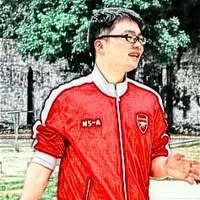


1900+ Users
Completed User Services

When it comes to the most successful portable device in gaming history, it undoubtedly goes to Nintendo’s Game Boy series. Since its release on April 21, 1989, the Game Boy handheld console, with its advanced portable gaming concept and balanced hardware performance and battery life, has allowed players to experience the joy of video games anytime, anywhere. Its revolutionary significance far surpasses that of modern mobile gaming.
It can be said that Nintendo‘s position in the handheld game industry is higher than that of the iPhone in the mobile phone industry.
The Game Boy handheld has undergone many evolutions in its life cycle, from the original black and white version that used four AA batteries, commonly known as the “big brick”, to the lightweight Game Boy Pocket, to the Game Boy Light with an added backlight, and finally the Game Boy Color with a color screen. The total sales of the Game Boy handheld series exceeded 120 million units.
Meanwhile, other game manufacturers released numerous competing products based on the Game Boy series. While their features appeared impressive, none could rival Nintendo’s over the years. Either the number of games was limited, or their battery life was prohibitive, making gameplay impossible. Ironically, the Game Boy, with its poorly rendered graphics, remained the dominant force for over a decade.
With no competitors, the Game Boy naturally had no shortage of high-quality games. There were many models with sales exceeding one million, and there were even several blockbuster games with sales of tens of millions. In this issue, we will review the 10 best-selling games on the Game Boy handheld and see which game is your childhood memory.
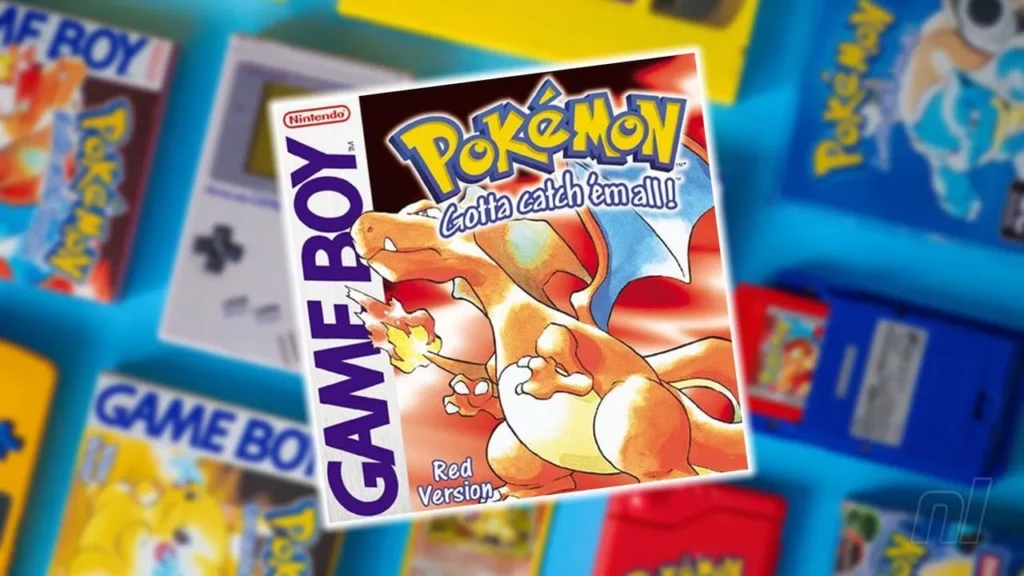
Super Mario Bros. Deluxe, released towards the end of the Game Boy’s lifespan, is a remake of the familiar FC version of Super Mario Bros.
As a remake of the 1985 Super Mario Bros., it finally arrived on a handheld console 14 years later. This version retains the original’s pixel art style, while utilizing a richer color palette based on the Game Boy Color’s display characteristics.
While retaining the original’s core content, it also incorporates numerous improvements. For example, the default number of lives has been increased to five, making it easier for users to play through the game in one sitting. Progress can be saved, eliminating the need to complete the game in one sitting, like in the FC version. A simple cutscene will appear after each level’s fourth castle, and a new level map displays player progress.
The game also added a world map and two-player simultaneous play. Aside from animated water and lava, the graphics weren’t significantly improved compared to the original.
Because the Game Boy Color’s screen resolution was smaller than the Nintendo Entertainment System’s, the player’s viewing distance was reduced. However, players could press the up and down keys to view the front and back, and the “Select” key to center or left-center the character.
Super Mario Bros. Deluxe also included the significantly more challenging sequel, The Lost Levels, which was only available on a disc at the time and rarely played by Chinese players.
Furthermore, the game’s environments were more three-dimensional, from the mysterious mushroom castle to the perilous volcanic zone, from the quiet haunted house to the challenging ice world—all vividly portrayed, giving players a truly immersive experience.
Character shadows have been enhanced, movements are smoother and more natural, and the overall visual quality has been significantly improved compared to the Wii U original, reaching 1080p resolution in docked mode and 720p in handheld mode.
It’s worth noting that this Game Boy remake didn’t release a separate cartridge in Japan and only supported the latest color GBC. Even so, the game’s sales performance demonstrates the immense appeal of this classic.
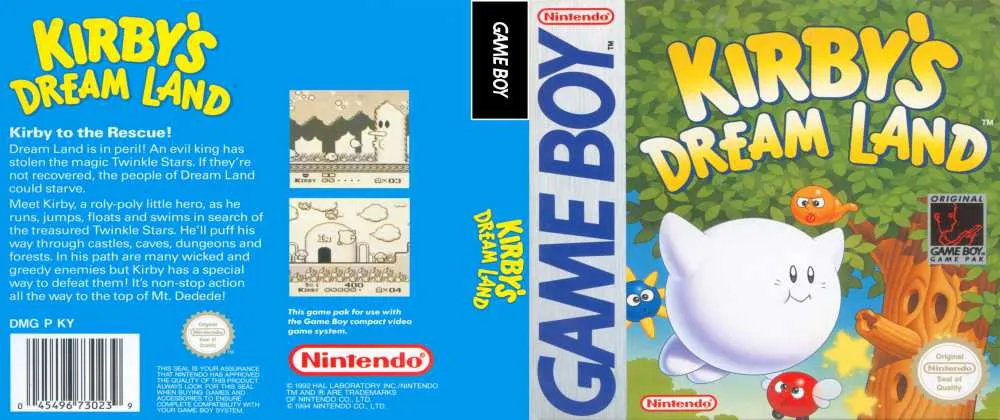
Kirby’s Dream Land is a 2D action-platform game developed by HAL Laboratory and published by Nintendo. It’s the first game in the Kirby series.
Kirby has always held a prominent position among Nintendo’s many characters, and while several titles have appeared on the latest Nintendo Switch, the series truly began with the original Game Boy handheld.
The origins of Kirby’s Dream Land are quite legendary. At the time, the bankrupt HAL Laboratory approached Nintendo for help. Hiroshi Yamauchi, impressed by the company’s innovations, guaranteed its debt and gave it a chance for revival.
Kirby’s Dream Land was originally developed as an experimental product. Nintendo wanted to release a beginner-friendly action game for the Game Boy handheld. To avoid undermining the popularity of the Mario IP, they used Kirby as a test case, offering players an easy-to-complete experience.
The game’s relaxed atmosphere and numerous funny characters quickly attracted a large number of players, who then began to invest their full efforts and gradually developed it into the Ace series.

Super Mario Land 3, commonly referred to as Wario Land: Super Mario Land 3, is a 2D action platformer released by Nintendo for the Game Boy in 1994. As the third installment in the Super Mario Land series, it marked the first time that the protagonist was replaced by Wario, marking the beginning of a new era for the independent Wario game series. The game offered groundbreaking innovations in gameplay, storyline, and character design.
Wario’s appearance as a boss in Super Mario Land 2 left a lasting impression on players, prompting Nintendo to make a bold move for the Game Boy handheld, introducing the villain as the player-controllable character in the new game.
The plot of Super Mario Land 3 continues that of Super Mario Land 2. Wario tries to take back the castle that was taken away from him, defeating enemies along the way while frantically collecting gold coins and treasures. The basic operation gameplay inherits Nintendo’s consistent fine tradition, and the large number of branching routes in the levels allows players to have rich exploration fun.
Compared to the previous two Super Mario Land games, Super Mario Land 3 has made significant innovations in gameplay, centered around Wario’s unique abilities and resource management:
Wario can stun enemies by jumping, stomping, or charging, then lift and throw them to attack other targets.
In his enlarged form, Wario can also perform a shoulder charge, which can not only attack enemies but also destroy certain blocks and unlock hidden treasure chests.
The game features three unique helmets, each granting Wario different abilities: the Bull Helmet boosts his strength, allowing him to climb walls and stun enemies with a stomping blow; the Jet Helmet increases movement speed, allowing for horizontal flight and underwater charging; and the Dragon Helmet fires fire, replacing the shoulder charge as a ranged attack.
Breaking with the Mario series’ tradition of using coins to exchange for extra lives, this game uses coins as a universal currency, earned by collecting, breaking blocks, and ramming enemies.
Players spend coins to open level exits and activate checkpoints, and can even combine 10 coins into a “coin coin” to use for throwing attacks or recycling.
Extra lives are earned by collecting heart points (100 points equals one life). When Wario is injured, he shrinks and loses his shoulder charge ability, requiring him to collect garlic, a helmet, or clear the level to recover. If he’s injured again while shrunken, he loses his life and all the coins in the current level.
The game features a hierarchical structure of “themed areas – sub-levels – boss battles.” Each themed area contains multiple linear levels, culminating in a boss battle.
Some levels contain hidden, locked treasure rooms that contain unique items or rewards. Players must explore hidden paths to discover them, increasing the replay value of each level.
This game successfully transformed Wario from the villain of Super Mario Land 2 into a standalone protagonist. Thanks to his money-grubbing, competitive nature and unique gameplay, the Wario series has gradually become a key Nintendo IP, spawning numerous subsequent titles, including Wario Land 2 and WarioWare.
The introduction of the “Currency – Power-Ups – Hidden Discovery” system provided a model for subsequent platform action games. For example, the design concept of the helmet power-up was adopted by many subsequent character-driven platform games, emphasizing the diversity of gameplay achieved through item swapping.
As a representative title for the Game Boy platform, this game fully leverages the console’s portability, with level lengths and difficulty designed to accommodate fragmented gameplay scenarios. At the same time, its innovative gameplay overcame the limitations of the hardware and graphics, making it a benchmark for handheld action games at the time.

The FC version of this game was extremely popular in China at the time, appearing in many assembly packs. The Game Boy version was released simultaneously with the FC version. Nintendo, having seen the appeal of the then-novel “matching” gameplay through Tetris, decided to create its own ace.
While this game bears the Mario branding, it’s essentially just a cameo appearance by the narrator. The controls, like flipping and falling, remain simple, offering more options for casual gamers. The classic background music is even more memorable.
This game combines the strategic elements of a falling object game with the fun of a medical theme. Players control Dr. Mario, throwing two-colored capsules. Arranging three or more capsules or viruses of the same color horizontally or vertically eliminates them.
As levels progress, the number of viruses increases, the speed of the capsules drops, and players must contend with limited space, creating a core challenge of “quick judgment + spatial planning.”
The different platform versions have minor rule adjustments. For example, the arcade version of Dr. Mario vs. Dr. Mario removed the slow mode and changed the scoring system from “double points for each virus eliminated” to “only add 200 points for each additional virus eliminated,” increasing the competitive difficulty.
The N64 version of Dr. Mario 64 added a story mode, introduced characters like Wario, and supported four-player online play, making it one of the most gameplay-rich versions of the series.
Due to hardware limitations, the original game featured a pixel-style visual. The viruses were designed as cartoon characters in red, blue, and yellow, and the capsule’s falling animation was smooth and recognizable.
In terms of music, tracks like “Fever” and “Chill,” composed by Hirokazu Tanaka, have a brisk tempo, perfectly matching the game’s tense puzzle-solving atmosphere and becoming classic game soundtracks remembered by players.
The series has not released a numbered, official sequel, but spin-offs continue to innovate. In 2008, Dr. Mario & Bacteria Smash for WiiWare added Wi-Fi support; in 2013, Dr. Luigi introduced L-shaped capsules and new gameplay; and in 2019, Dr. Mario World for mobile devices experimented with a free download with an in-app purchases model.
Notably, Dr. Mario also appears as a hidden character in Super Smash Bros. Melee, where his capsule-throwing technique has become a signature move.
As one of Nintendo’s early successful puzzle games, its “themed falling object puzzle” approach has had a profound impact. For example, some of the item combination logic in the subsequent Kirby series and the spatial puzzle design in Go! Captain Toad both bears the shadow of Dr. Mario.
In 2024, the AI-generated “Angry Dr. Mario” meme unexpectedly went viral. The hilarious video of Mario studying medicine to save Luigi, along with the frames of his angry expression, sparked a wave of secondary creation by players, spawning numerous anime-style re-imaginings and a remake of the game “Gary’s Mod,” demonstrating the enduring vitality of classic IPs.
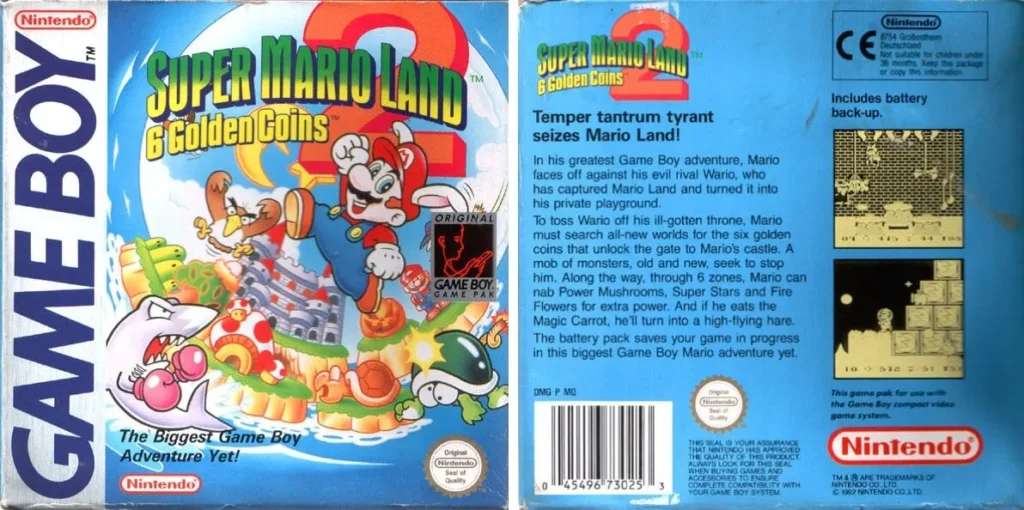
Super Mario Land, released by Nintendo on the Game Boy GB handheld, is a side-scrolling action game with a side-scrolling effect.
Due to hardware limitations and other factors, the overall performance left much room for improvement, and for a long time, it wasn’t considered a mainline entry in the series. However, this game has seen significant improvements across the board, with levels closer to the home console experience. Most importantly, it features the addition of the brand-new character Wario, whose appearance and abilities have been well-received by players.
The game’s plot follows closely on from the previous game. While Mario is traveling to the land of Sarasa, his childhood friend Wario casts an evil spell on Mario Land, his private island. He seizes Mario Castle and brainwashes the islanders, making them consider Wario their master and Mario their enemy.
Wario’s actions are driven by his desire for a palace of his own. He has scattered the castle’s “six gold coins” across Mario Land, guarded by his minions. Mario must collect these six coins to enter the castle, defeat Wario, and reclaim his home.
The game features a map similar to the Super Mario World game for the SFC. After completing the initial level, players can choose from six zones outside of Mario City. Each zone has a unique theme, such as the “Space Zone” centered around the moon and stars, the “Macro Zone” where Mario transforms into a tiny form, and the “Turtle Zone” where Mario swims underwater.
Except for the Mario Zone, the other five zones contain hidden levels, adding to the exploration and excitement of the game.
Mario possesses powerful abilities like fireballs and high jumps to defeat enemies along the way. Players must flexibly utilize these abilities to overcome obstacles and defeat enemies to complete levels.
Wario made his first appearance as a villain in this game. His unique appearance and personality left a lasting impression on players. Since then, Wario has become a key Nintendo character, spawning a separate Wario game series.
Upon release, the game received widespread acclaim, selling over 11 million copies and becoming one of the most successful and highest-rated games on the Game Boy platform. It surpassed its predecessor in every way, offering players a richer gaming experience.
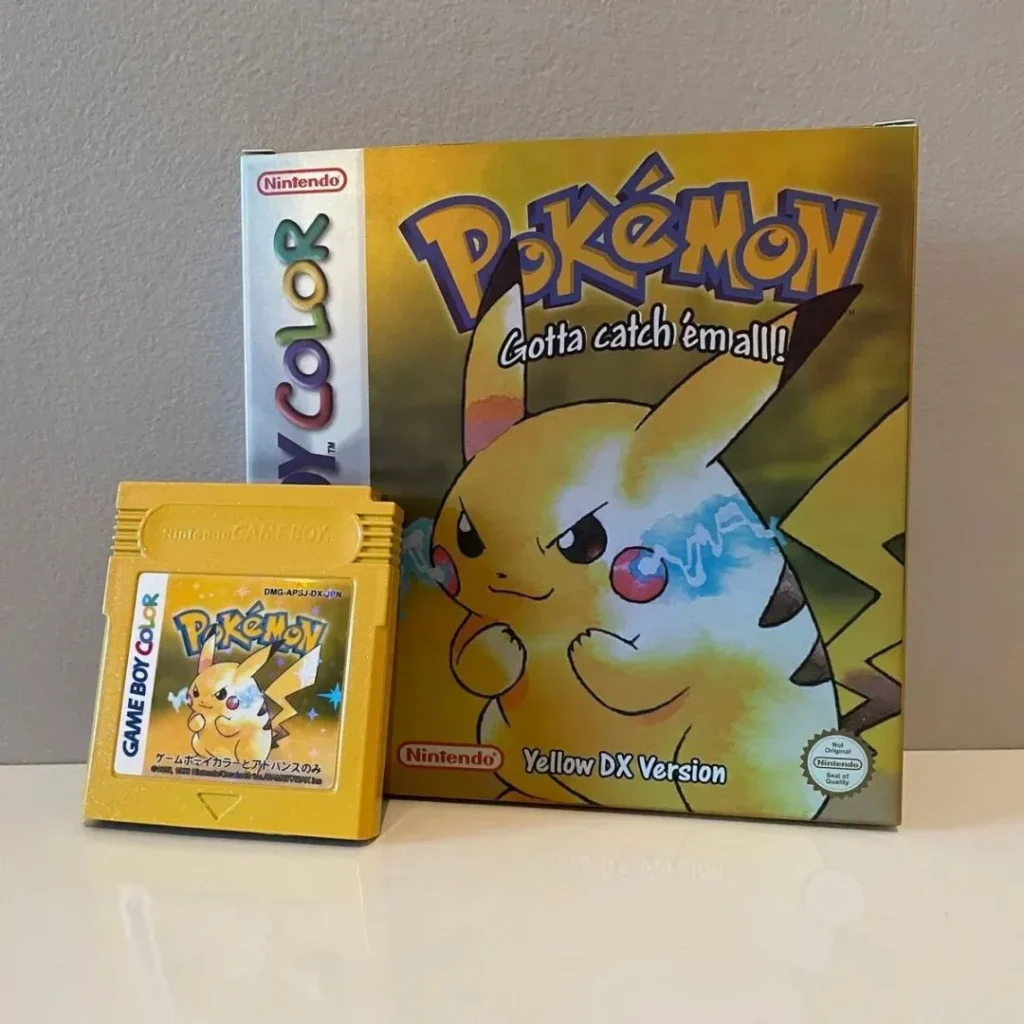
I believe that many players became crazy about Pokémon Yellow through this game. When the game was released, the color version of the GBC began to become popular. Pokémon Yellow, which mainly focuses on the super-popular character Pikachu, embarked on a new journey based on the previous Pokémon Red/Blue engine. Its storyline is closer to the original animation, which made fans praise it. Even now, it is the best choice for those who are new to Pokémon.
After the game starts, you will directly get a Pikachu. This protagonist will always accompany you on adventures, just like your closest friend. Players will have a strong sense of accomplishment when taking care of it. The classic cry was considered a luxury on the hardware platform at the time. At the same time, the color performance of the picture far exceeds the previous version. Its sales performance is well deserved.
The player’s starting Pokémon is always Pikachu, and Pikachu refuses to enter the Poké Ball and instead follows the protagonist. This setting echoes the relationship between Pikachu and Ash in the anime.
When the player talks to Pikachu, the game displays its affection for the trainer through its expressions, forming the basis of the intimacy system. Pikachu also refuses to use Thunder Stones to evolve and has a unique cry during battle.
The game’s story is highly authentic to the anime. Team Rocket members Musashi, Kojiro, and Meowth will appear as opponents in certain scenes. The Pokémon used by Gym Leaders are also inspired by the anime and have been upgraded in level, giving players a stronger sense of immersion.
Although the initial Pokémon is Pikachu, players can obtain Bulbasaur, Charmander, and Squirtle from specific characters later in the game, completing the initial three Pokémon.
In addition, 150 other Pokémon can be captured in the game, and Pokémon can be transferred and battled with other versions of the game using a link line.
Compared to Pokémon Red and Blue, Pokémon Yellow features significantly improved graphics, with brighter colors and more vivid Pokémon. Regarding the audio, the soundtrack has been further refined to better match the anime’s style and enhance the game’s atmosphere.
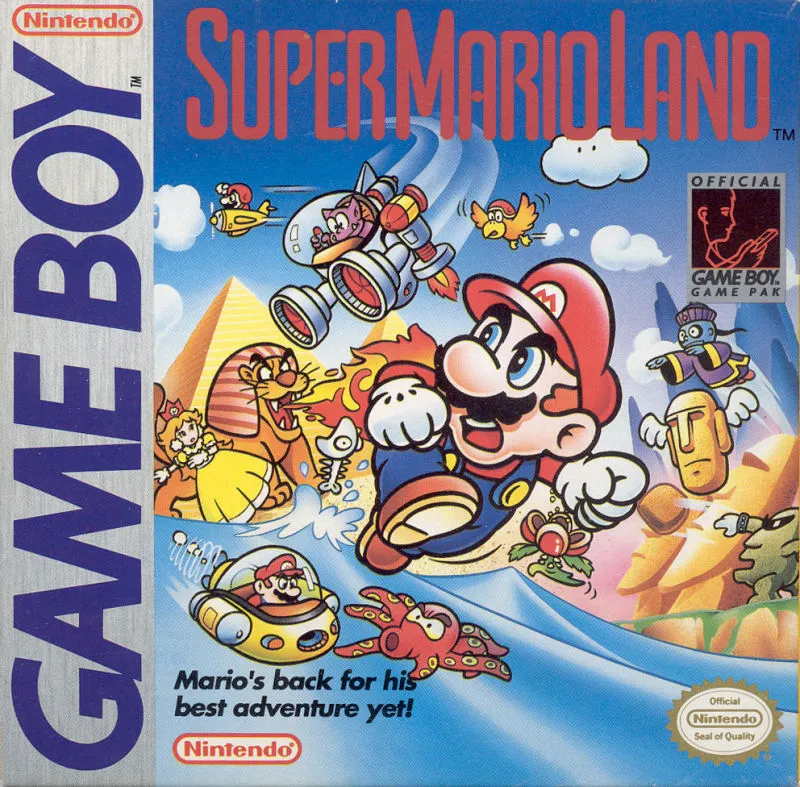
At the request of Nintendo President Hiroshi Yamauchi, Nintendo Development Department, led by Game Boy creator Gunpei Yokoi, produced this Mario platformer. It was also the first Mario game to be released on a handheld console, and the first Mario game not produced by Shigeru Miyamoto, the “Father of Mario.”
The game is set on the continent of Sarasa, comprised of four kingdoms: the Kingdoms of Bilaft, Miyot, Easton, and Chayi.
One day, the mysterious cosmic monster Tatanga blankets Sarasa with a pitch-black cloud and, through cosmic hypnosis, manipulates the inhabitants of each kingdom. He seizes the continent and abducts Princess Daisy, intending to make her his queen.
Upon learning of this, Mario embarks on an adventure to restore peace to the continent and rescue Princess Daisy.
The game’s controls have been simplified to suit the Game Boy’s hardware performance and button configuration. Players control Mario’s movement with the arrow keys, jump with the A button, and sprint or launch a Super Ball with the B button. Players can also use button combinations to perform actions like crouching and crawling into a dirt pipe.
The game features 12 levels, divided into two worlds: the outer and inner worlds. After completing the outer world, you can enter the inner world, which has a similar layout but a higher level of difficulty. There are also hidden passages, adding to the exploration potential.
In addition, there are two “Space Cruiser”-style shooting levels, where Mario can pilot a submarine or a plane to battle enemies.
Princess Daisy makes her debut in this game, becoming the one Mario needs to rescue. She’s since become a regular character in the Mario series. The game is set in the land of Sarasa, a refreshing departure from previous locations like the Mushroom Kingdom, offering a fresh visual experience.
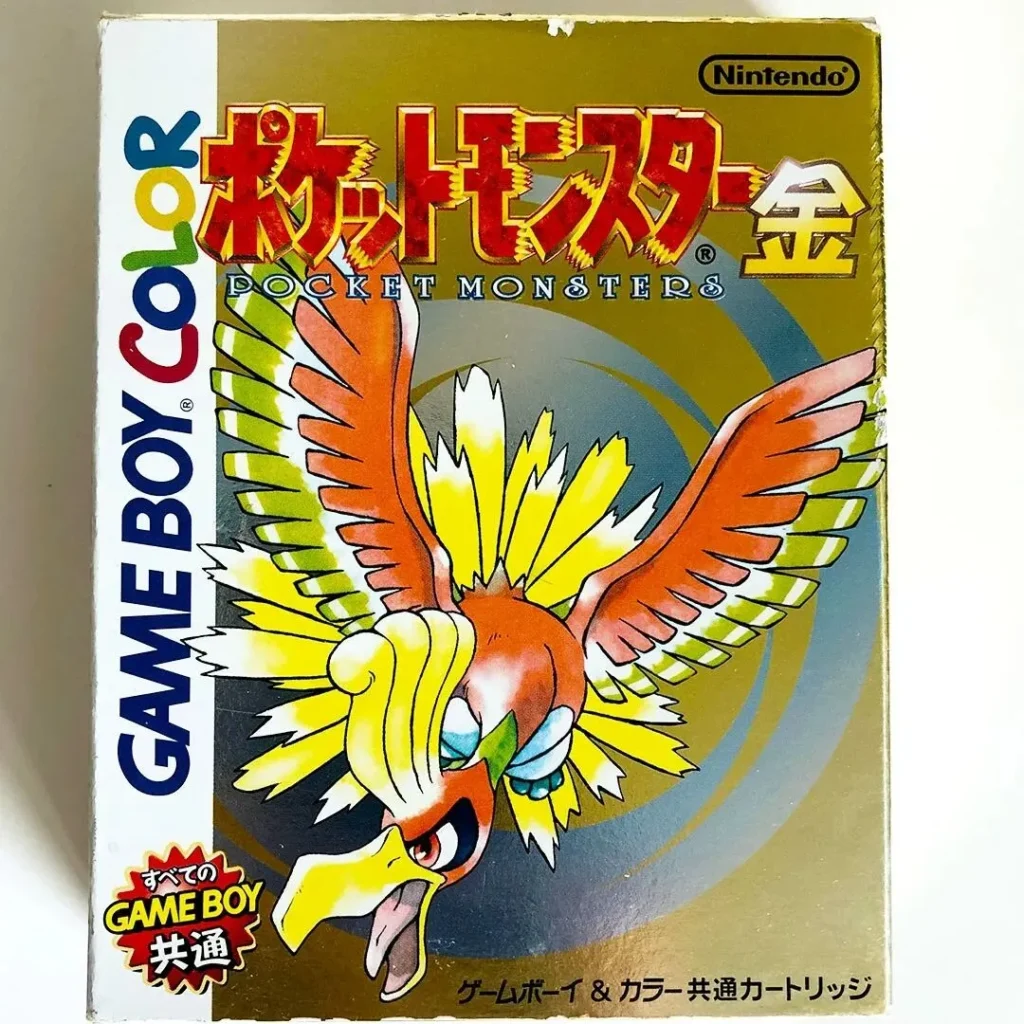
The Pokémon series enjoyed immense success during the Game Boy era. At the end of the hardware’s lifespan in late 1999, Nintendo released the significantly improved Pokémon Gold and Silver. Redesigned for the color Game Boy, the full-color graphics significantly improved over the original black-and-white versions, while also maintaining compatibility with older devices.
A landmark entry in the series, Pokémon Gold and Silver achieved a breakthrough in worldview, system depth, and gameplay innovation, selling 23.2 million copies worldwide, ranking fourth among all Pokémon games.
The story is set three years after the first generation of “Pokémon Red/Blue“. The stage is centered on the Johto region, based on Kansai, Japan. Players can start from Wakaba Town and eventually cross the Quartz Plateau to reach the Kanto region of the previous game, forming the series’ first dual map structure.
Under Professor Sora’s guidance, the protagonist chooses their starting Pokémon (Chikorita, Charmeleon, or Croaker). While challenging the eight Johto gyms, they discover that the remnants of Team Rocket are attempting to use their Pokémon for criminal activities. After defeating Team Rocket’s leader, Sakaki, the protagonist must conquer the Quartz League, ultimately leading to a showdown with Red, the protagonist of the previous game, atop Mt. Silver.
The Johto region blends tradition with natural landscapes. Goldman, an industrial and economic center, stands in stark contrast to Kaji Town, which preserves ninjutsu culture, and Ink City, a sacred place for dragon-type Pokémon.
The region also boasts unique settlements such as Hinoki Town, home to the worship of Slowpoke, and Kikyo City, steeped in Shinto traditions. Each town has its own unique cultural symbols and ecological environment.
For the first time, the game introduces real-time day and night and weekly cycles, which not only affect screen brightness changes (such as reduced visibility in the wild at night), but also determine the appearance of specific Pokémon (such as the Night Watcher only appears at night), NPC activities (some shops are open on specific days of the week) and plot triggers (such as the mobile game market opening on Tuesdays), greatly enhancing the realism of the world.
A new egg-laying system has been added, where players can place male and female Pokémon into breeding houses to reproduce offspring, which may inherit the skills and individual values of their parents; the intimacy system has been improved, and Pokémon’s evolution (such as Pichu evolving into Pikachu) and skill power (such as Return a Favor) are all linked to intimacy; for the first time, “special” ability values are split into special attack and special defense, making combat strategies more diverse.
Two new attributes, Dark and Steel, have been added, 11 skill attributes have been adjusted (such as Bite has been changed from Normal to Dark), and the attribute restraint table has been restructured (such as Ghost has changed from being ineffective against Psychic to doing double damage); hidden elements such as Shiny Pokémon (different-colored individuals that appear with extremely low probability) and Pokémon Viruses (which can increase the efficiency of obtaining Effort Value) have been added to stimulate players’ desire to collect.
Exclusive Pokémon: Gold allows you to capture Entei and Ho-oh, while Silver allows you to capture Suicune and Lugia. Some rare Pokémon (such as Slowpoke’s evolution from Gold and Silver’s evolution from Silver) only appear in certain versions.
Plot Focus: Gold features a more intensive plot with more prominent villains; Silver offers richer graphics, higher-quality re-arranged music, and more free exploration.
After defeating the Alliance, the Kanto region map is unlocked, and players can re-challenge the eight Kanto gyms, collect legendary Pokémon from previous games (such as Mewtwo and the three sacred birds), and unlock a hidden battle with Red at Silver Mountain. The average level of its team is over level 80, making it one of the most difficult boss battles in the series.
As a Game Boy Color escort work, the game is the first to feature full-color graphics in the Pokémon series. The four seasons of the Johto region (such as the cherry blossoms in Hinoki Town and the sea view of Azure City) are presented through layers of color blocks; the music uses multi-track synthesis technology, and the electronic style of Manjin City is in sharp contrast with the traditional Japanese melody of Yuzu City. A total of more than 100 original tracks are included.
In 2009, Nintendo released a remake of “Pokémon HeartGold/SoulSilver” on the NDS Platform, adding touch screen operation, a Pokémon follower system, a competitive game mode, and enhanced scene details in the Kanto region (such as the visualization of the maglev train track).
The “dual map + time system + deep development” framework established in this game became the design template for subsequent works in the series. Its exploration of open-world narrative and player freedom directly influenced the regional design of “Pokémon Ruby/Sapphire” and the plot depth of “Pokémon Black/White“.
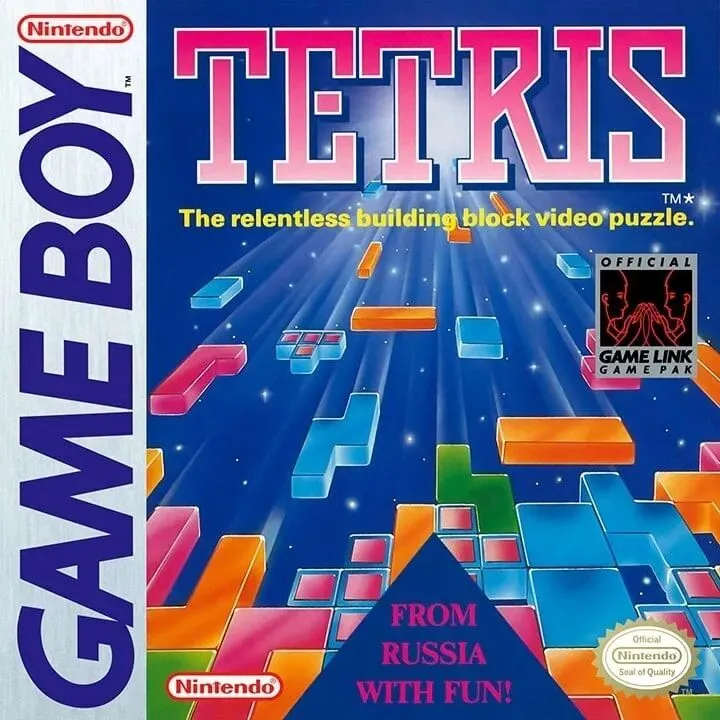
This name is probably known to everyone. Even non-professional game users are impressed by this block that is popular all over the world.
Originally developed for PC by Soviet programmer Pajitnov, the game boasts not only excellent gameplay but also, due to the chaotic nature of copyright disputes across various platforms, led to an intellectual property dispute. Apple TV+ adapted the story into a film of the same name, and ultimately, Nintendo secured the rights to Tetris for both home and handheld consoles.
Minoru Arakawa, then general manager of Nintendo of America, was fascinated by this all-ages casual game, believing it to be a perfect match for the upcoming Game Boy handheld. His judgment was fully borne out. Despite lacking a storyline or characters, the game quickly became a global hit thanks to its intuitive rules and the ability to be played anytime, anywhere.
At the same time, a large number of pre-assembled Tetris handheld consoles appeared, and their low price made them widely available in China. McDonald’s even recently released a replica of the game in the shape of a Chicken McNugget.
Tetris and the Game Boy handheld can be said to have mutually enhanced each other. Without the Game Boy, a platform that could be played anywhere, the game probably wouldn’t have become so widely known. It’s truly an enduring classic, born for handhelds.
In June 1984, while working at the Moscow Scientific Computer Center, Russian computer expert Alexey Pajitnov, inspired by jigsaw puzzles, developed the original Tetris on an Elektronika 60 computer.
The game’s name derives from the Greek word “Tetra” (meaning “four,” as all blocks consist of four small squares) and his favorite word, “Tennis.”
In 1985, the game was ported to PC and spread among Moscow computer circles, which subsequently triggered a complex copyright dispute.
Because the Soviet Union lacked a mature intellectual property system at the time, British businessman Robert Stein attempted to steal the copyright, falsely claiming the game was developed by Hungarians and arbitrarily licensing it to multiple manufacturers.
In 1988, the Soviet software company Elorg intervened and gradually clarified the ownership of the copyright.
In 1989, Nintendo successfully acquired the handheld rights through Henk Rogers, releasing it as one of the first games for the Game Boy (GB). Atari, Bullet-Proof Software, and other companies also obtained distribution rights for different platforms.
This incident ultimately made Tetris the first “Iron Curtain” game to be released by multiple manufacturers in multiple countries, and its promotional material even incorporated Cold War elements (such as Gagarin’s space flight and war scenes).
The game stage is a 10-column x 20-row grid. Seven types of blocks (named after their shapes: S, Z, L, J, I, O, and T) consisting of four small squares randomly drop from the top. Players move and rotate the blocks to complete the rows and columns at the bottom.
Complete rows and columns are automatically cleared, and the more rows you clear, the higher your score (for example, clearing four rows at once (a “quadruple clear”) earns you a much higher score than clearing a single row). Uncleared blocks continue to pile up, and the game ends when they reach the top. As your score increases, the blocks fall faster, testing your spatial judgment, hand-eye coordination, and reaction speed.
For the first time, the game combines action and puzzle elements. There are no preset levels or fixed victory conditions. With “delayed failure” as the core goal, a dynamic difficulty curve (increasing falling speed) is used to create a flow experience for players, which not only lowers the entry threshold but also retains space for deep strategy (such as “leaving space for layout” and “continuous elimination,” and other advanced techniques).
In 1988, the FC version of “Tetris” sold 2 million copies in Japan. Following the release of the GB version in 1989, a cumulative 30 million copies were produced worldwide, making it a key game in popularizing the Game Boy.
Since then, the game has been adapted for nearly every major platform, including arcade machines, Nintendo DS, mobile phones, and consoles, spawning innovative versions such as “Tetris 99” (multiplayer) and “Tetris Effect” (immersive audiovisual experience).
As of 2023, cumulative sales across all platforms exceeded 500 million copies, making it one of the best-selling games of all time. The mobile version contributed significantly to the downloads, becoming a shared memory for players of all ages.
As a pioneer of action puzzle games, Tetris demonstrated the commercial potential of casual games and influenced the design of subsequent puzzle games such as Bejeweled and Eliminator.
Tetris’ minimalist mechanics have also become a subject of research in game psychology, with applications in areas such as attention training and stress relief.
In 1990, the game was included as a final event in the Nintendo World Series, establishing its status as a pioneer in esports.
Today, the classic Famicom version of the game, the “CTWC (Classic Tetris World Series),” has been held for 10 years. The 2016 finals garnered 9 million views on YouTube, with legendary player Jonas winning seven times and breaking records such as the 999,999 point limit and the 300-line clear limit.
Furthermore, the game has frequently appeared in films, television shows, variety shows, and commercials, becoming a global cultural icon.
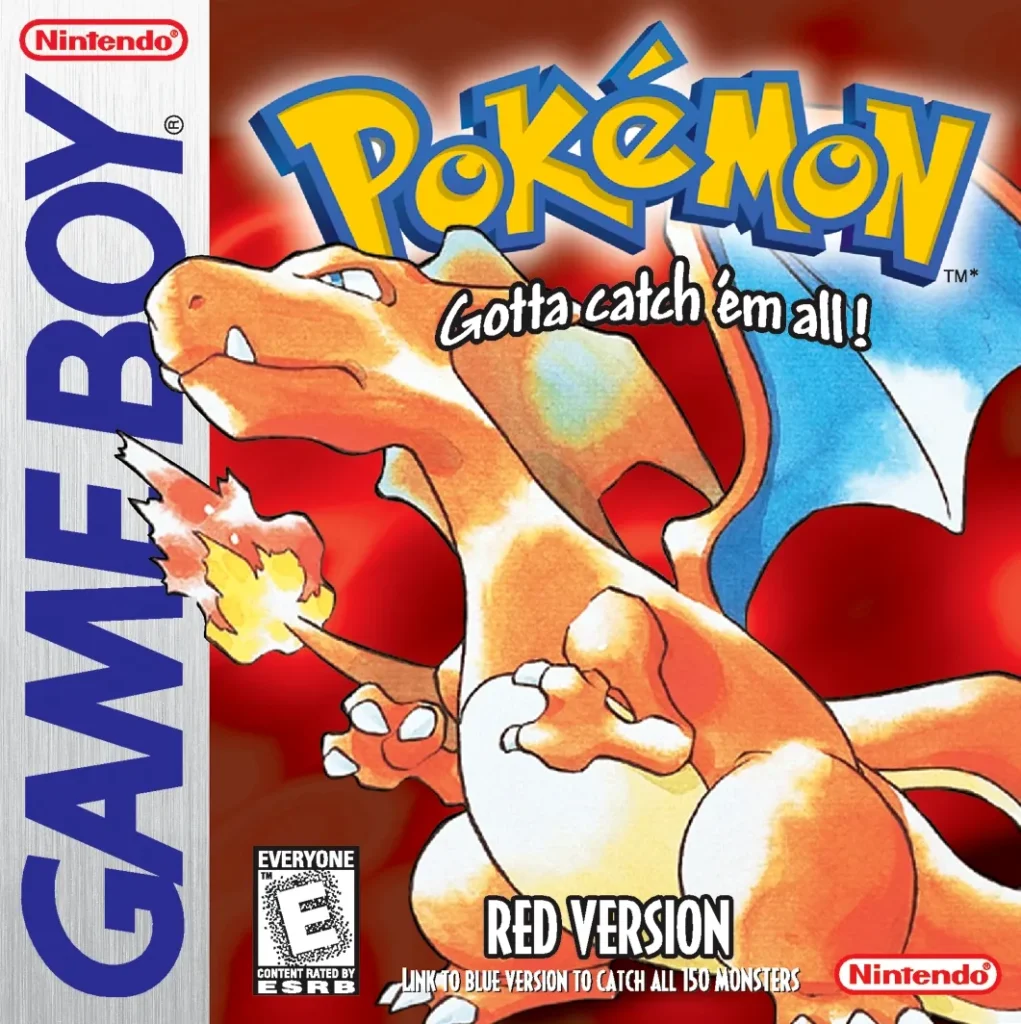
The Game Boy handheld holds revolutionary significance in gaming history, not only pioneering a device focused on portability and long-lasting performance, but also pioneering software development. Nintendo has provided a near-perfect answer to the question of what kind of experience players can have with portable gaming.
The first generation of “Pokémon” was a completely new transformation based on the traditional RPG gameplay.
The scene was designed based on the real Japan, and a large number of collection and development elements were incorporated.
The overall rhythm is very suitable for the fragmented time of handheld users. It is no surprise that it has achieved huge success. If you want to choose a game that best reflects the characteristics of the GB handheld, then this game deserves it.
The game was led by Satoshi Tajiri, inspired by his childhood insect collecting. The development team spent six years polishing it, but initially faced multiple cuts due to technical limitations (the Game Boy’s limited functionality). It was even internally deemed a “third-rate product” by Nintendo, earning a mere 29 points out of 40 on Famitsu.
The setting is the Kanto region, modeled after Japan’s Kanto region. It encompasses 10 towns, including Pallet Town (the protagonist’s hometown), Cerulean City (home to the Water Gym), and Vermilion City (a port city), connected by 25 routes.
The region boasts diverse terrain, including Moonlight Mountain, home to Rock-type Pokémon, the Pokémon Tower in Lavender Town, home to Ghost-type Pokémon, and the Cerulean Caves, the birthplace of Mewtwo.
The protagonist receives a starting Pokémon from Professor Oak (Bulbasaur for the Red version, Squirtle for the Green version, and Charmander for the Blue version, with some versions optional). To become a Pokémon Master, they challenge the eight Kanto gyms.
Along the way, they must confront Team Rocket, a sinister organization that exploits Pokémon for criminal activities, and stop their leader, Sakaki, from using the Mew gene to clone Mewtwo in Rainbow City. After defeating the Elite Four and the Champion, the protagonist must complete the National Pokédex collection, ultimately capturing Mewtwo in the Cerulean Caves.
This was the first time that the Game Boy’s infrared data transmission function was utilized, allowing players to exchange and battle Pokémon between different versions.
The complete Pokédex, comprising 151 Pokémon, could only be obtained by trading between versions (e.g., Slowpoke for the Red version, and Blastoise for the Green version). This feature directly led to a surge in sales of data cables, making Pokémon trading a popular social activity in Japan at the time.
A Pokédex mechanism has been introduced, requiring players to record Pokémon’s habitats, attributes, and evolutionary conditions. Some Pokémon (such as Mewtwo and Mew) require completing specific plots or being obtained through activities, stimulating players’ desire to explore.
It adopts attribute restraint (such as grass restrains water, fire restrains grass) and turn-based combat, initially including 15 attributes and 165 skills. Although the mechanism is simple, it lays the foundation for the combat depth of subsequent series.
Pokémon evolve through leveling up (for example, Butterfree needs to evolve from Caterpillar to Metapod), and some evolutions require meeting special conditions (for example, Pikachu needs to reach a certain level of intimacy to evolve into Raichu), but in-depth cultivation elements such as laying eggs and effort points have not yet been introduced.
Exclusive Pokémon: The Red version allows you to capture Caracalla, Slowpoke, and more. The Green version includes characters like Lil’ Tongue and Slither. The Blue version integrates some exclusive Pokémon from both versions and adds rare Pokémon like Chansey.
Graphics: The Blue version optimizes Pokémon sprite animations (e.g., Pikachu’s movements are smoother) and adjusts the color palette of some towns (e.g., the Vermilion City harbor scene is brighter).
Mew Exploit: A specific process (changing maps after triggering an NPC conversation in Crimson Town) can trigger a bug that allows you to capture Mew, which was supposed to be event-exclusive. This exploit has become one of the series’ most famous hidden Easter eggs.
Lavender Town BGM: Some players reported that the original Lavender Town background music, due to its high-frequency sound waves, may cause discomfort. The melody has been adjusted in subsequent versions.
Despite its initial lukewarm reception, Red/Green/Blue, thanks to its viral “social swapping” gameplay, ultimately achieved sales of 23 million copies (subsequent statistics put it at over 31 million copies across all platforms), directly driving a surge in Game Boy console sales and solidifying Nintendo’s dominance in handheld consoles.
Nintendo capitalized on the success of the franchise by launching derivative content such as the “Pokémon” animation (premiering in 1997), trading cards, and the “Pokémon Special” comic, establishing a comprehensive industry chain encompassing “games – animation – peripherals,” sparking the global “Pokémania.”
This established the Pokémon series’ “multiple versions per generation” release model (with 2-3 core versions released per subsequent generation). Its design philosophy of “combining collection and social interaction” influenced the social systems of numerous games, including Animal Crossing: New Horizons and Monster Hunter.
The Nintendo GB handheld once produced a wealth of excellent titles. While these games may seem a bit crude now, the classic memories they left behind, even in the era of limited entertainment, are unforgettable. Even today, even revisiting them on an emulator, the gameplay remains timeless, offering the simplest and most sophisticated portable gaming experience.
What other good games from the GB era have you played? Feel free to share your childhood memories in the comments section~